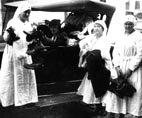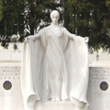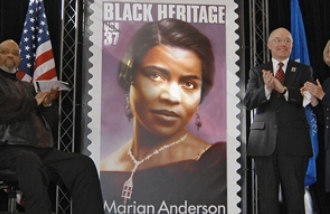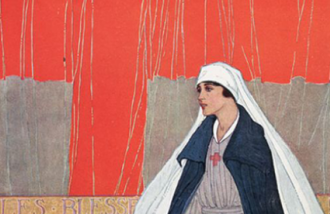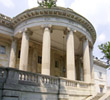
For Immediate Release
- Press Contact:
- Bren Landon
- [email protected]
- (202) 572-0563
DAR Museum Needlework Exhibit Gives a Glimpse
Into 19th Century Women’s Lives
WASHINGTON, DC – With nearly 80 examples of 19th century needlework on display in the new DAR Museum exhibition, visitors will have the pleasure of not only viewing beautiful textiles, but also get a glimpse into the lives of the makers of these historic pieces. The exhibition, “Telling Their Stories: 19th Century Samplers and Silk Embroideries,” which runs from April 11 – August 30, 2008, examines the artistry of early American stitching as well as delves into the family history of the creators of these needle arts.
Learning to sew was a part of every young girl’s schooling in the early–to-mid 19th century. One basic technique was taught through a marking sampler to learn stitches, letters, and numerals. It is called a “marking sampler” because the knowledge gained enabled a needleworker to “mark” such things as clothing and household linens. It became useful not only for that purpose but also as a tool for learning to form words essential for reading. The more complex samplers followed and are sometimes classified as pictorial, architectural, genealogical (family records), and even straightforward verse. Additionally
floral designs enhanced the needlework and could be duplicated on clothing and fine linen. You will find all of these examples represented in the exhibition.
Silk embroideries on the other hand were much more than practice pieces and took considerable expertise. These very difficult and very beautiful embroideries stitched in silk or metallic thread on silk with a watercolor wash were more like paintings than samplers. Most often these pieces were made as “graduation pieces” by older girls who had mastered their sewing classes or by skilled women needleworkers.
The DAR Museum exhibition highlights a vast range of samplers and silk embroideries and also provides information about the girls who created them and the women they became. Many of these samplers have clues about the maker right on the piece (such as name or initials, dates, locations, etc), so the exciting part of a curator’s work comes from researching the life of the maker. Discoveries about the maker from census reports, family records, and local histories help to create a more complete portrait of the woman as well as the times she lived in.
“The accomplishments of the needleworker are evident in the pieces we have on display, but it is even more fascinating to learn what these women endured and accomplished in their everyday lives,” says exhibition curator Olive Graffam. “The focus of this exhibition gives us the opportunity to highlight women’s craftsmanship while also admiring their personal role in the many changes taking place during the 19th century.”
The exhibition covers many different aspects of needlework in the 19th century including samplers – and the stories of their makers – by American immigrants, Easterners, and those who migrated West; motifs that arose from the influence of certain well-known needlework schools; how needlework gradually became less of a practicality and more of a hobby; and the various tools that have been used by needle workers over the years.
Those visitors inspired by either the artistry or the family history of the samplers and embroideries on display don’t have to end their exploration in the DAR Museum Gallery. Available from the DAR Museum Shop are sampler charts and kits that visitors can purchase and make their own needlework reproductions of samplers from the DAR Museum collection. Also, located across the hall from the museum is the DAR Library, one of the premiere genealogical research centers in the country, where the public is welcome to delve into their own family history search.
# # #
The DAR Museum collection features more than 30,000 examples of decorative and fine arts, including objects made or used in America prior to the Industrial Revolution. Furniture, silver, paintings, ceramics and textiles, such as quilts and costumes, are exhibited in 31 period rooms and two galleries. The main gallery features changing exhibitions and displays of selected quilts, coverlets and samplers. The DAR Museum Shop offers a variety of unique gifts and books. The DAR Museum, located at 1776 D Street NW, is free to the public and open 9:30 a.m. - 4:00 p.m. Monday - Friday and 9:00 a.m. - 5:00 p.m. on Saturday. Docent tours of the period rooms are offered from 10:00 a.m. - 2:30 p.m. Monday - Friday and 9:00 a.m. – 5:00 p.m. Saturday. The DAR Museum is closed Sundays, Federal holidays, and for one week during the DAR annual meeting in July. For information on the DAR Museum, visit www.dar.org/museum or call (202) 879-3241 to schedule a group tour.


